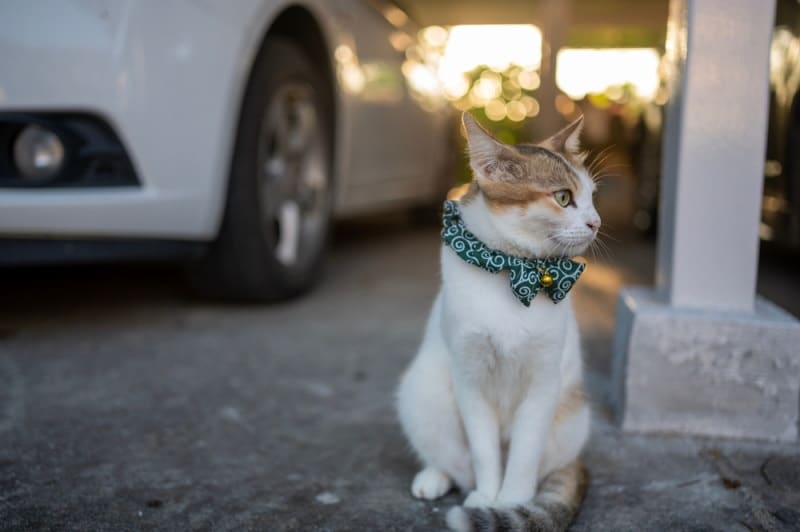Every year, hundreds of thousands of cats find their way into garages. Whether they’re pets that discovered a new place to play or a feral cat that found somewhere a little warmer and more sheltered from the elements, garages are a common place for cats to hunker down.
Though some people don’t mind the presence of a cat in their garage, other people fear for the safety of the animal, their children or their own pets, or they may have allergies towards cats and therefore wouldn’t want a cat in their garage. There are plenty of ways you can get a cat out of the garage, and whether you’re dealing with a pet or feral cat, we’ve highlighted 10 of the most effective methods for you here!
The 11 Tips to Get a Cat Out of Your Garage
1. Call to Them
Sometimes, the easiest solution is staring us right in the face. This method works better with pet cats, but you can attempt it with a feral cat if you’re trying to lure them out so you can shut the garage.
Just keep in mind that you should not handle a feral cat. When you’re trying to call a cat to get it to come to you, use a calm voice and get down to their level (if they seem like a pet). Don’t make them feel like they’ll be in trouble once you get them. Otherwise, they’ll just want to run away.
Finally, don’t make it a game. If it’s fun for them, they won’t want to listen and will just want to keep playing!
2. Use Treats
Who does not love a yummy treat? Whether you’re trying to get a feral cat out of the garage or get your pet cat back inside, treats can make an outstanding solution. Just keep in mind that while treats make it a lot easier to get the cat out of the garage, they can also act as a reward system that encourages them to get into the garage in the first place.
If you have a secure way to keep them out of the garage, this isn’t a huge deal, and your top priority should be just getting them out of the garage in the first place.
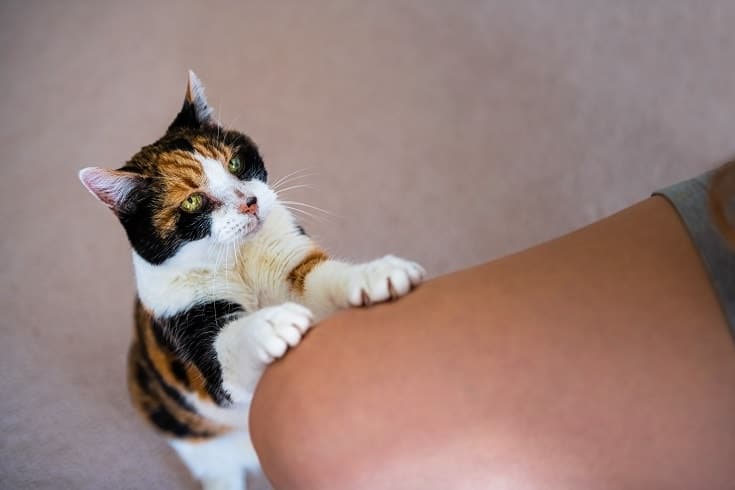
3. Use a Trap
Before using a pet trap, it’s best to consult your relevant local authorities to find out the most up-to-date information about the legality of trapping a cat (or another animal). A cat that’s placed in a trap should only be left in the trap for as little as possible once captured.
This is not a method you’ll likely want to use for your pet cat, but if you have a feral cat trying to call your garage home, a cat trap is a possible solution. Put an extremely enticing bait inside of it and the cat should come to check it out at some point.
Just keep in mind that with traps, you typically only get one good shot at catching a cat. Cats are extremely smart, so once they see how the trap works, they’ll likely avoid it in the future.
4. Cover the Trap
Cats are intelligent creatures, and if they don’t like the look of the trap, they might not go inside no matter how yummy the treat looks. A possible workaround for this is to cover the trap completely. Not only does this hide the more intimidating parts of the trap, but it can make it feel like a safe den for them.
You don’t need to get too creative with the cover, often something as simple as a blanket will do the trick. But if you are dealing with a repeat offender or an extremely smart feline, you might need to go the extra mile to camouflage it.
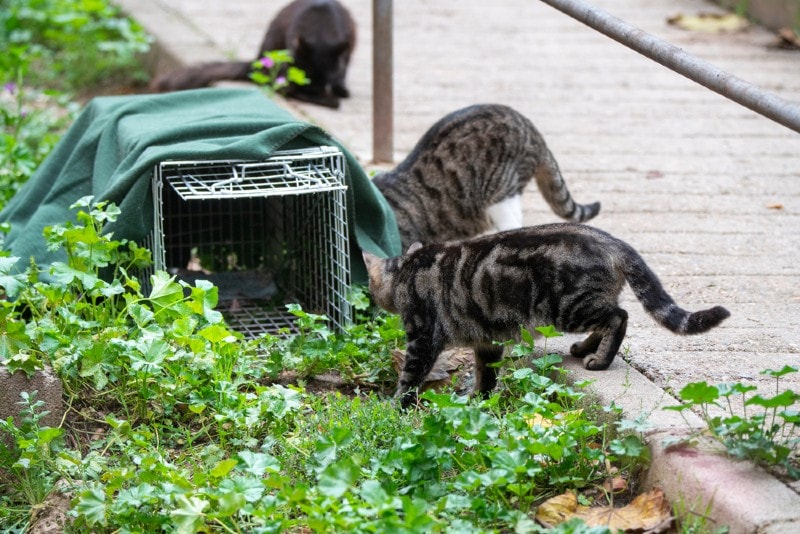
5. Distract the Cat
Even a pet cat may lash out, bite, scratch, and kick if suddenly picked up from behind. Cat gloves are recommended if you wish to attempt this. A cat may still wriggle free from your grip through cat gloves. It’s best to seek a professional’s help for this.
If you have a friend or a family member willing to help you out, this might be the way to get your cat out of the garage. One person should do everything they can to keep the cat’s attention while the other one tries to sneak up on the cat.
This is mostly a method for pet cats, though. Feral cats are often extremely skittish of anyone approaching and may bolt well before you can get close enough. You also never know what kind of disease a wild cat might have. No matter what this isn’t an easy method to complete though, as cats have great instincts and an extremely sharp sense of hearing, smell, and sight.
6. Use Another Cat
If you have another cat in your home, you might be able to use them to entice the troublemaker in the garage to come out. This is best if the cat in your garage is your pet.
However, this largely depends on your cat’s personality (and the other cat’s personality too). Remember that, instinctively, all cats are territorial, and most of them wouldn’t take too kindly to an intruder. The resulting scuffle can lead to an injury and, in some cases, the confrontation may spook your existing cat into hiding too.
Finally, if you have a kitten from the cat in the garage, you can use them as bait. Simply put them in a container behind the trap where the cat must enter the trap to get to the kitten. This method is highly effective, but it only works if you have access to one of the kittens (and if the cat in question is their mother).
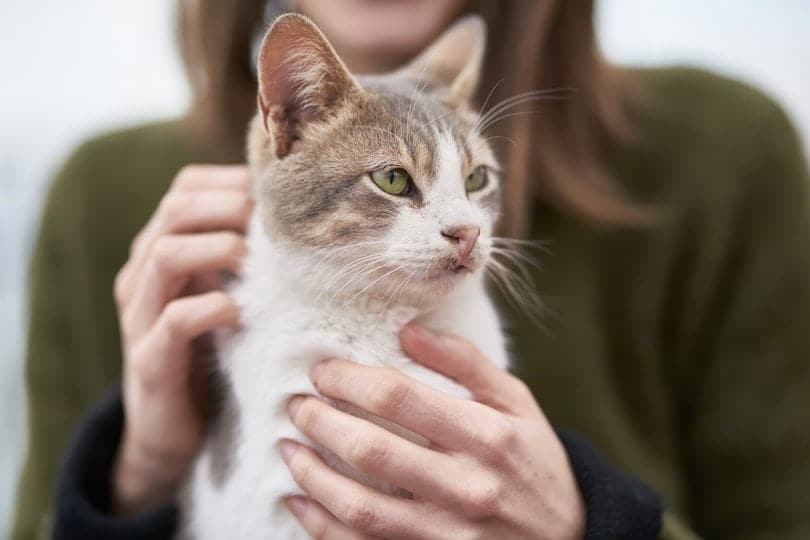
7. Use a Laser Pointer
The use of laser pointers as toys is controversial, as it can lead to stress in pet cats and may be damaging when shone in their eyes. When used to lure a cat out of a garage, ensure you don’t shine the laser pointer in their eyes.
Cats love laser pointers! When they see the light shining and moving along the ground, they really can’t help themselves. You can use a laser pointer to get a feral cat to chase it out of the garage, and for pets, you can use it to get them to chase it back into the house or to you.
Either way, get them playing and chasing the light and they might just forget they’re trying to stay away from you!
8. Use Catnip
Much like a laser pointer, some cats react favorably to catnip and come investigating it whenever they can sniff it. This might be an effective way to lure a cat out of your garage.
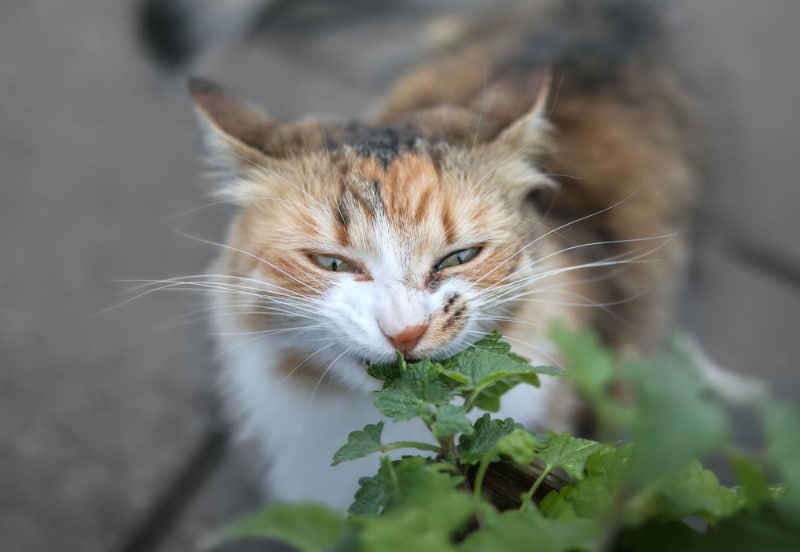
9. Make Some Noise
Making noise might just make it so the cat wants to hide further in the garage, but it also might make it so they want to escape by any means necessary. This is a high-risk, high-reward method, and it’s why we recommend using it as one of your last resorts.
However, if you’re looking for a deterrent to keep cats from coming into your garage, it should be near the top of your list. The noise might not be agreeable with your neighbors or other pets inside your house.
10. Create Some Open Space
We get that this might not be feasible for everyone, but if you can create a lot of open space in your garage, then there are fewer places for a cat to hide. Cats feel safe when there’s more clutter around, and they’re far more likely to settle in when that’s the case.
Not only that, but if a cat does come into an open garage, it’s much easier to track them down and get them out when they don’t have a ton of places to hide.

11. Call an Expert
When all else fails, remember that sometimes the most stress-free option may be to stop racking your brain and risking injury and to just call in an expert to handle the situation for you. Many shelters and pet centers offer such services. In some jurisdictions, your local fire department might be able to help as well (depending on their policy). Although this does sound extreme, many people reminisce on wishing they’d done so from the get go to save themselves and the cat a great deal of stress as they try to figure out a solution.
Conclusion
At times, it might be important to get a cat out of your garage. Fortunately, some tips and tricks can help cats come out of hiding, and as always, a professional can be called in when all else fails. If you do happen to catch a cat in your garage, we highly recommend taking them to a local shelter or a vet. They may be able to identify the cat (if microchipped) and provide additional help to you or the cat as necessary.
Featured Image Credit: bochimsang12, Shutterstock

